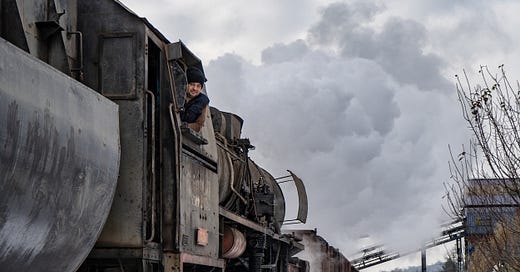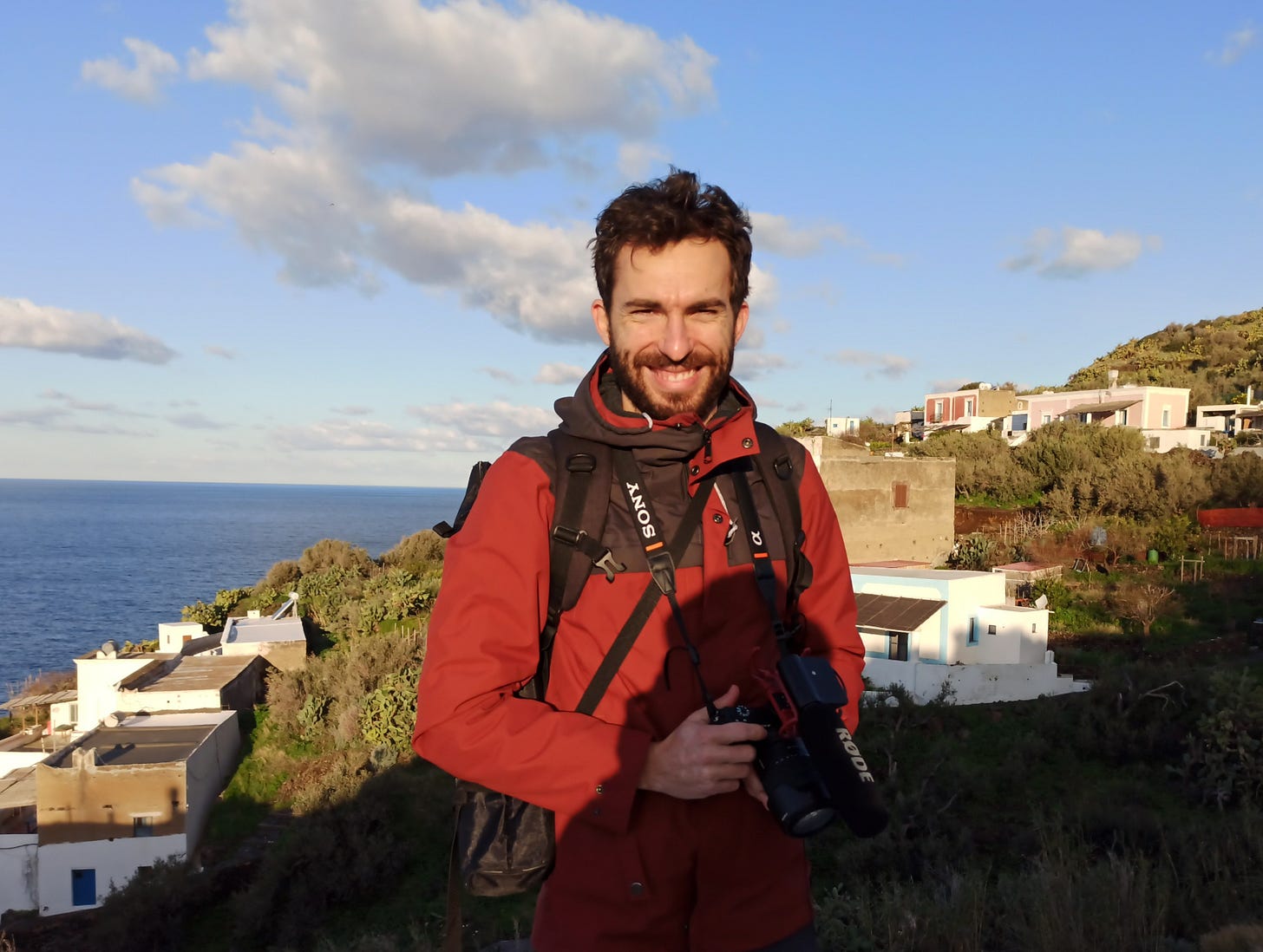S4E3. Make haste slowly
A train ride can open many discussions on its own usefulness and folklore. Interview with Marco Carlone, author of 'Binario Est' reportage book, on the fascinating and controversial Balkan railways
Hi,
welcome back to BarBalkans, the newsletter (and website) with blurred boundaries.
After the strong beginning of the new season with the exclusive interview with writer Anilda Ibrahimi and the frenetic dance of Zorba the Greek at the Verona Arena, it is time to slow down and look a little bit more around us.
What is the best way to do it? By train, of course!
Not a high-speed train, that reaches the destination as soon as possible. Today we take an old passenger train with compartment cars, slowly proceeding along a mountain railway.
Sitting among baskets of vegetables, milk and eggs, we enjoy the scenery from the window. And we have a chat with our guest about the fascinating world of Balkan railways.
Marco Carlone - freelance journalist, photographer and video-maker - had this experience for real and collected his most evocative journeys in a reportage book, Binario Est (‘East rail’).
From the coasts of Croatia to Ukrainian Transcarpathia, through the devastated rail network in Albania and the paradoxical divisions of the Bosnian one.
He tells us about a way of getting around completely different from what we are used to. Without dwelling on an artificial and romanticized rhetoric.
Festina lente, the ancients said. Make haste slowly. It is time to get back on the road.

Reportage for everyone
«The idea was to collect a number of reportages about my most significant experiences from 2011 onwards». This is how Carlone explains how he came with the inspiration of writing a book about railways in the Balkans and Eastern Europe, during the COVID-19 pandemic in 2020: «I had been postponing to sort out all the notes for years and, during the lockdown, I just did it».
He has been fascinated by trains since childhood. At the end of high school, «I began to discover the world of ‘railway addicts’, as train drivers call us». Firstly, this passion led him to travel around Italy, taking pictures of the most beautiful railway lines and trains. And then, «when I finished with the Italian lines, I started traveling beyond Trieste».
This was how in 2011 Carlone discovered another world - the Balkans and former Soviet Europe. «At the time, I did not know that it would become a good part of my work».
At the very beginning, the aim was to chase trains «in specific locations for their beauty». But after a while, the desire to take the next step took over. And passion was combined with journalistic work: «Reportage for everyone, especially for people who are not fond of trains and railways».
Binario Est collects those reportages for everyone, «which allowed me to tell about fragments of the Balkan countries through the railway».
Because in these countries the train «has very different operating regimes, compared to Central and Western Europe». As Carlone reveals, some professional figures that have disappeared elsewhere still exist here.
For example? «The signal person, the attendant who walks around the station with a hammer to tap the “wheels” of trains to check the brake blocks, the professionals who raise the level crossing by hand». Compared to Western Europe, «in many parts of the Balkans there is a disproportionate number of professionals in relation to the density and length of the lines».
Trains are also «generally more antiquated, mainly for economic reasons, although not everywhere». What really matters is that in many cases «they have special stories to tell».
Usefulness and folklore
The reportage book follows train journeys to Albania, Bosnia and Herzegovina, Croatia, Bulgaria, Romania, Moldova and Ukraine. «I looked for stories that would give me the opportunity to tell a different type of railway than we are used to», Carlone points out.
According to the author, beyond the Balkans - in Eastern Europe - pandemic there was one of the most interesting examples (at least until the outbreak of the COVID-19 pandemic). A half-destroyed railway in Transcarpathia.
«The destination of this Ukraine Railways’ train, that ran three times a week, was the market in Vynohradiv. It passed through four villages and it allowed people to get on with vegetables, milk and eggs to sell at the market». The most particular and scenic thing was the location of the market: «Exactly where the railroad ended, the trains were maneuvered among chickens and old ladies passing by».
At this point we have to consider one of the most important issues, when we talk about railways in the Balkans and Eastern Europe. «Train travel is often related to folklore and romance, but I was keen to point out that it was actually the easiest way of getting to trade», Carlone makes it clear. «Despite a 25-kilometers trip that lasted an hour and twenty minutes, it was the most useful mean of transport».
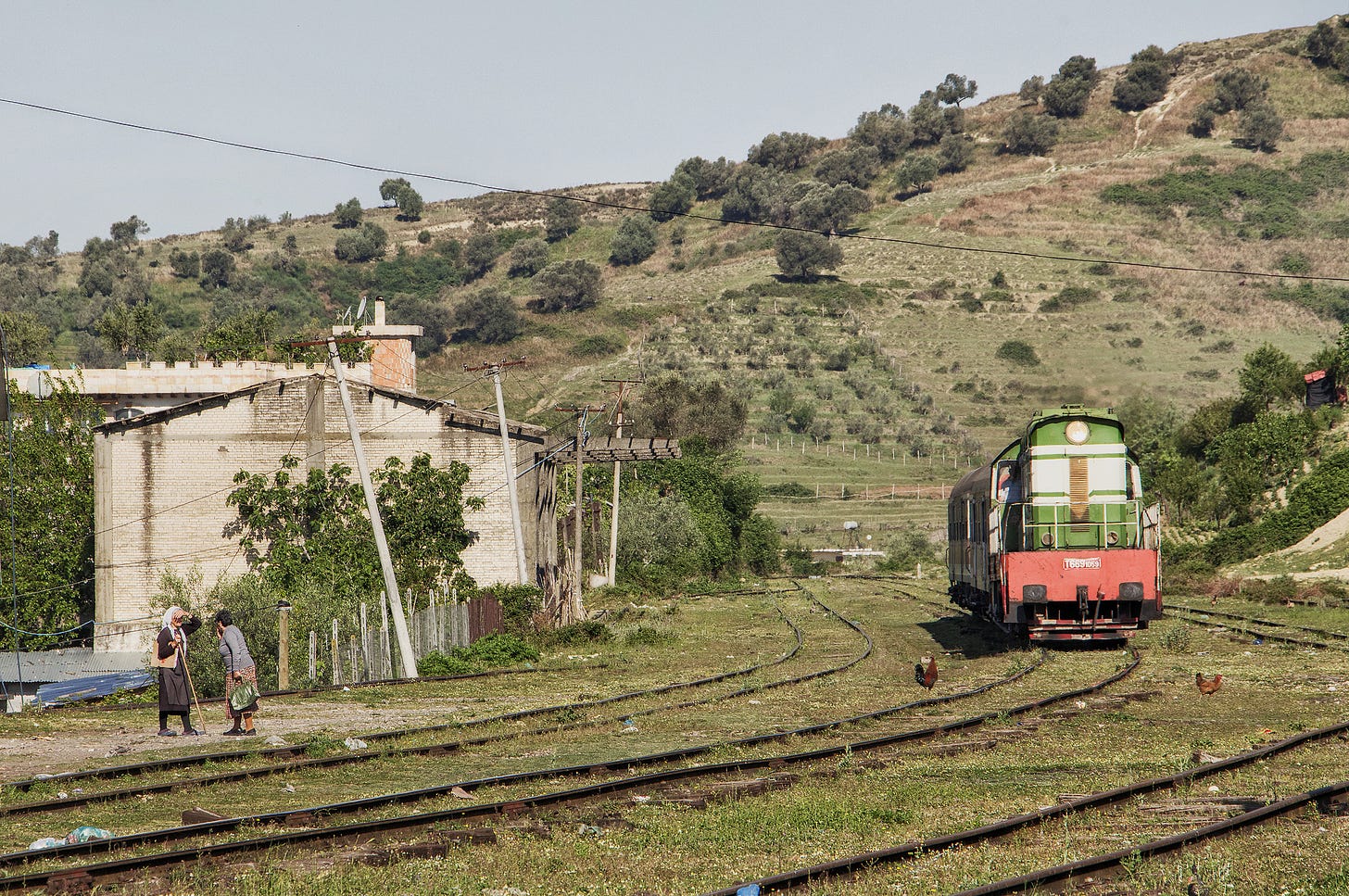
The journey is not always easy. «Albania is the worst place to take a train in the Balkans». The network still suffers Enver Hoxha’s isolationism, and it was left as it was in the mid-Sixties, «with no infrastructure and no maintenance».
Since trains cost and own-production is complex, «Albania bought them at first from the Soviet Union and then were shipped from China». For many years the network remained «isolated and devastated». It was only in the 2000s that Italian railway engineering supported efforts to rebuild part of the network: «Italy donated some compartment cars, that are still running nowadays».
But still in 2019, «there was not enough diesel fuel to run trains for most of the year». Locomotives ready to leave for Montenegro «were turned off and the drivers went home, as soon as the preparation was over». Only four trains a week are left on the entire Albanian network and they do not even reach the capital Tirana.
Another «equally distressing» situation regards Bosnia and Herzegovina, «because of the political crystallization in the country». Like all things in Bosnia, the rail network is divided between the two entities - Republika Srpksa and the Federation - «and the respective railways do not communicate».
Examples abound. «There is no train from Sarajevo to Banja Luka, it is practically impossible to make that trip». You have to leave with a train of the Federation, all the way to Maglaj. There, the railway ends. Then, you have to find a way to get to Doboj, where a train eventually reaches Banja Luka. «It is an absolutely absurd situation», Carlone sums up.
Something similar happens in Tuzla, which used to be connected to Doboj and then to Sarajevo. «But in 2019 the service was cut by Republika Srpska and now only a connection to four villages on the border is left. It is not possible to reach the city». Even if the railway actually exists.

At this point the question on the overall assessment of the Balkan railways is needed. «If we are talking about scenic beauty, you can find here some of the most beautiful lines in Europe». Especially in the former Yugoslav countries: «The railway in Montenegro, the Sarajevo-Ploče line, the connection between Rijeka and Zagreb, or between Zagreb and Split».
«If we are talking about functionality, a lot depends on the country». In Romania and Bulgaria, trains are very busy, they cost relatively little and there is a good schedule: «It is a useful service for people, it still has an egalitarian function for travel».
On the other hand, where there are no trains, or the runs have been cut, or the infrastructure is destroyed, «the population cannot count on a functional service». As in Albania and Bosnia and Herzegovina, but also in North Macedonia, «where the network is collapsing», and in Kosovo, «where there are almost no trains».
What all these railways have in common - regardless of whether they are well-functioning or not, capillary or not - is the fact that «touristification is at an embryonic state, trains still serve locals», Carlone confirms.
The railways will remain like this, as long as the service will be purely local and tourism will approach these networks by respecting them. «At least as long as the cost of tickets will not increase and trains will not become a tourist gimmick». They will preserve their «proletarian and democratic soul, where you can meet people carrying milk and eggs to be sold at the market».
The experiences reported in Binario Est have to be approached without the «somehow boring» rhetoric of “the travel that touches the strings of your soul”, an «extreme romanticization of train ride».
Even if «it is true that it allows you to see incredible landscapes and to visit places far from the main tourist routes, despite Balkan unpredictability», Carlone points out with a smile. «And local people who use these trains tend to be intrigued by tourists and to stop willingly for a chat».
All the fascination is really in the journey, in meeting people and discovering local customs and habits. It is not the artificial amazement for an “exotic” world, that is just the patronizing, discriminatory and distorted view of a different reality, compared to everyday Western life.
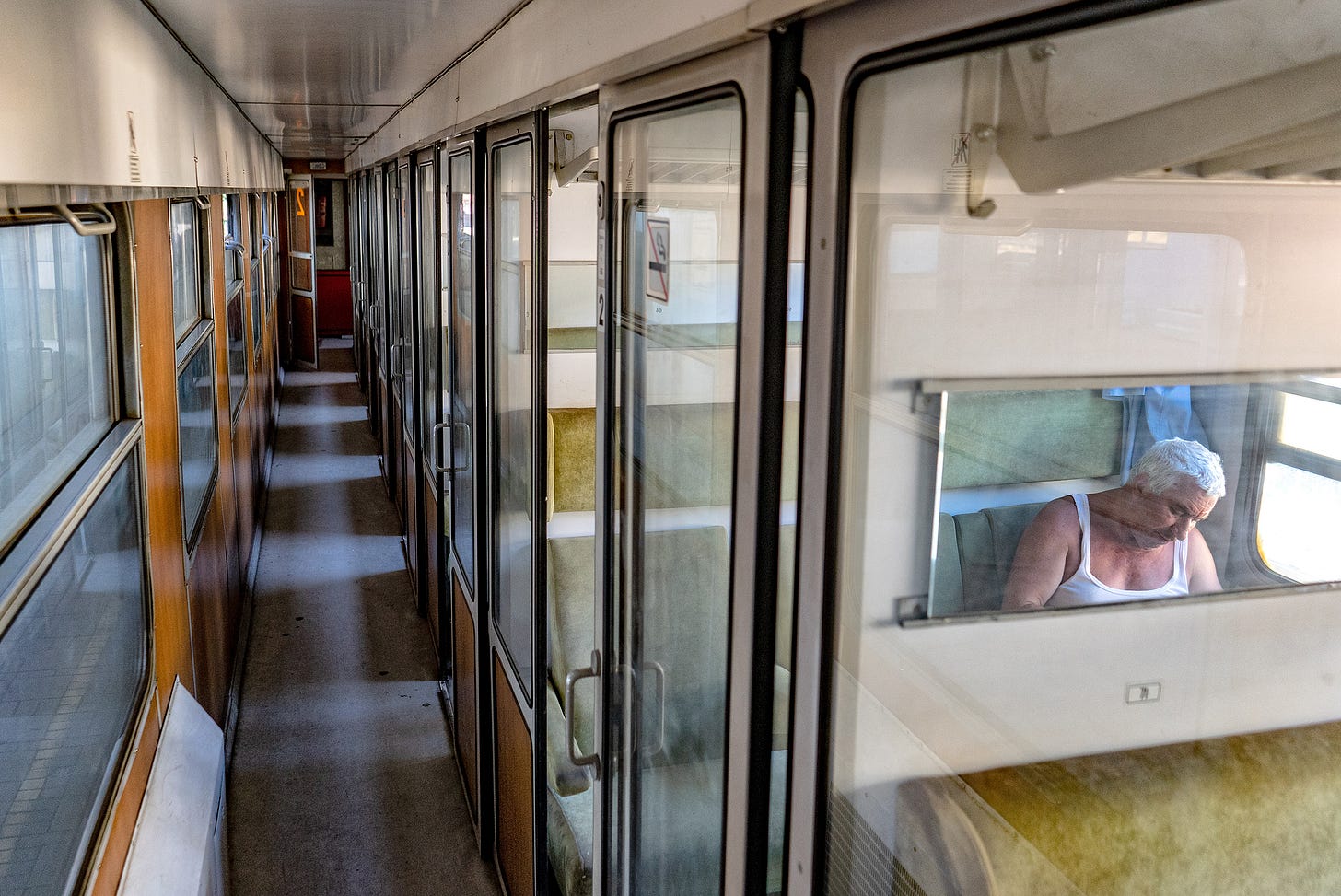
A dangerous decline
Traveling by train in the Balkans can be complicated, sometimes impossible because of the lack of connections. Has it always been this way?
«Back in the former Yugoslavia, there were many connections, both domestic and international: to Germany, to Greece, even the Orient Express passed by there», Carlone recalls. «In the Seventies you could go from Oslo to Baghdad with just one change».
In the 20th century, «there were many services». Such as the Balkan Express, «child of the Orient Express, a train for diplomats and rich people». The Balkan Express - or Balkanzug in German - was first established between 1916 and 1918 to connect the Central Empires with the Ottoman Empire. From Berlin to Istanbul, via Budapest and Belgrade.
This train was discontinued at the end of World War I and then reactivated again to replace the Orient Express (which ended the service in 1977). «No longer a luxury service, but manly for migrant workers to Central and Eastern Europe».
But with the collapse of the former Yugoslavia, «it was all a decrease in trains». This trend continued in more recent times, as Carlone’s experience teaches: «The first time I traveled to North Macedonia in 2014 to photograph trains, there were connections to Pristina, Belgrade, and Thessaloniki. Now nothing anymore».
As the years go by, fewer and fewer international connections remain. «In Bosnia there were trains to Zagreb and Belgrade until 2016, now they have been terminated». Only thanks to Chinese funding, «in Serbia there is a line to Budapest, while the train used to go all the way to Vienna at night, passing through Zagreb, has not been running for years».
On the former Yugoslav territory, cross-border rail connections on a regular basis «exist only between Croatia and Slovenia».
In addition to the absence of major international connections, internal routes can also be a disaster in the Balkans. The impact of the wars in the Nineties «is visible on railway maps», as the lines «were built once in the same country, while today there are borders».
For example, «there was a magnificent electrified line between Bihać and Knin, which was part of the Zagreb-Split connection». During the war «it was destroyed and then abandoned, and now the border between Bosnia and Croatia passes there».
This means that «many lines no longer have the ubiquity they used to have», as demonstrated by the Adriatic line from Sarajevo to Ploče: «When you arrive to the Metcović border, the locomotive is changed, because you enter Croatia for the last 15 kilometers». In short, «all this has worsened the state of the Yugoslav railways».

In a continent moving toward high-speed trains and decarbonization of rail transport, the future of Balkan railways depends from country to country. «For Kosovo, North Macedonia, Bosnia and Herzegovina and Albania, a total dissolution is not unlikely», as they have «very few resources or are investing too slowly».
For example, North Macedonia «has bought new bi-modal locomotives with very good speed from China». But the infrastructure «dates back to the Yugoslav period and, therefore, trains are limited to 30 kilometers per hour». And in any case, «there are no stocks of trains to prevent the service from stopping, if just one locomotive breaks».
On the contrary, «Serbia has rebuilt a network almost from scratch thanks to Chinese funding». In other words, much depends on foreign subsidies: «Croatia, Romania and Bulgaria have obtained EU funds to increase their services».
The environmental issue has also entered the public debate, as trains can be a “green alternative” to airplanes. But it happened mostly «because there are no alternatives for speed and economy travels».
However, there is no doubt that the green transition can help tourism, since backpackers give importance to sustainable travel: «I hope that environmental protection and decarbonization will drive investment in Balkan railways». This is the wish for the future of an enthusiast connoisseur and author of a valuable reportage book on trains in the Balkans and Eastern Europe.
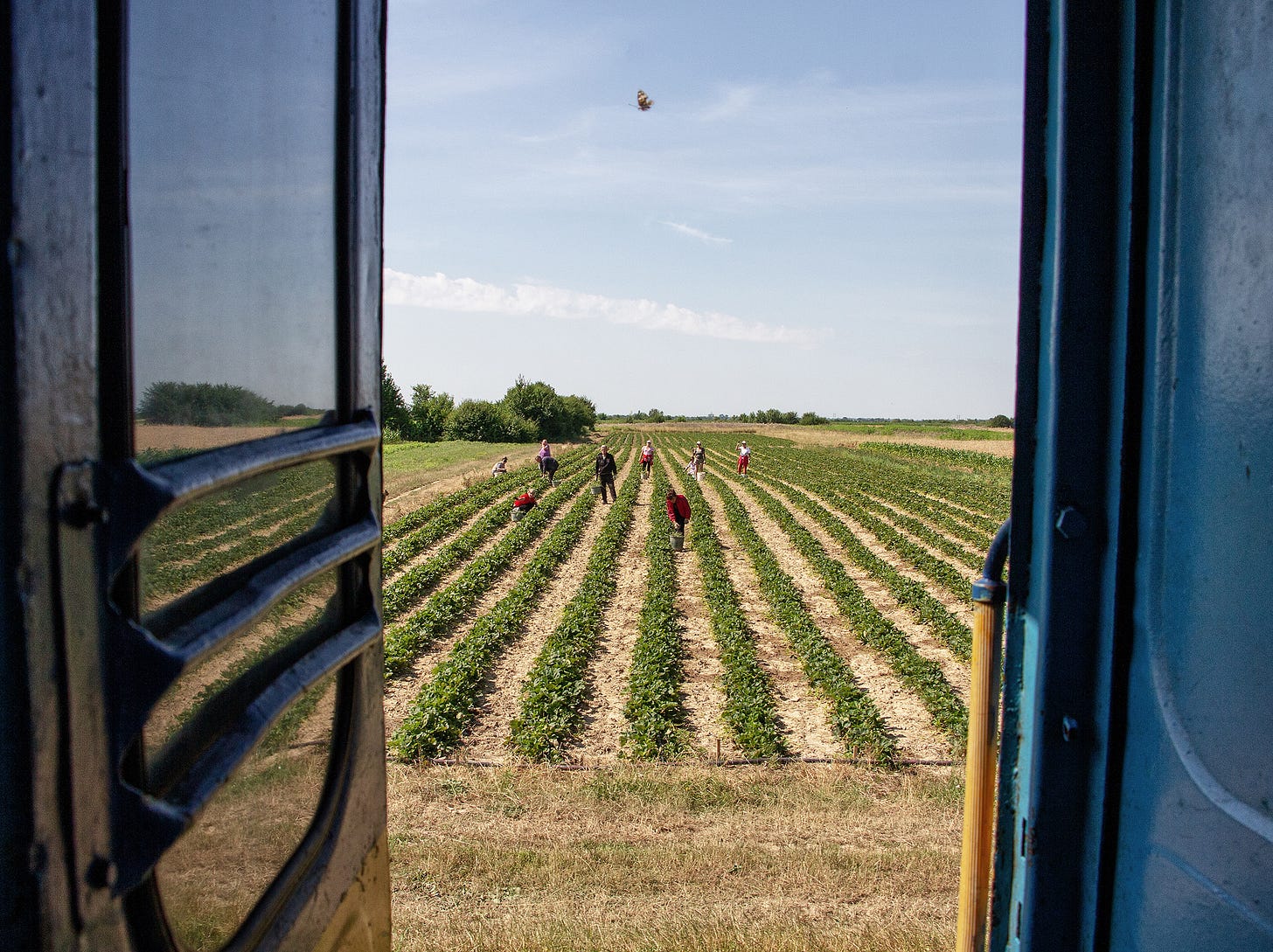
Pit stop. Sittin’ at the BarBalkans
We have reached the end of this piece of road.
Today our bar, the BarBalkans, is aboard a train that crosses the Balkan peninsula. Albeit with some difficulty...
«It is rare to find bar-cars on these trains», Carlone unveils at the end of our chat. Where present, «they offer American coffee» and a kind of comfort that cannot be missing: «Packaged ‘7 days’ croissants, with absolutely absurd flavored creams. Chocolate chip and saffron custard flavored cream, Oreo cream, sparkling wine flavored cream».
Another similar product is «packaged ‘Belino’ croissants, also with extravagant creams, half chocolate and half pistachio-amarena».
Where bar-cars are lacking, functionality comes first, in a sort of quaint spirit: «On the Bucharest-Istanbul train that travels for 20 hours, if you ask the bunkman, he makes you Turkish coffee with his little stove!»
Let’s continue BarBalkans journey. We will meet again in two weeks, for the 4th stop of this season.
A big hug and have a good journey!
If you have a proposal for a Balkan-themed article, interview or report, please send it to redazione@barbalcani.eu. External original contributions will be published every last Friday of the month in BarBalkans - Open bar section.
Your support is essential to realize all that you have read. And to keep BarBalkans newsletter free for everyone.
An independent project like this cannot survive without the support of the readers. For this reason I kindly ask you to consider the possibility of donating:
Every second Wednesday of the month you will receive a monthly article-podcast on the Yugoslav Wars, to find out what was happening in the Balkans - right in that month - 30 years ago.
You can listen to the preview of BarBalkans - Podcast on Spreaker and Spotify.

